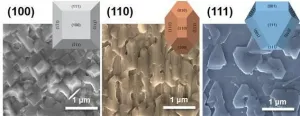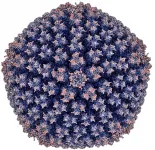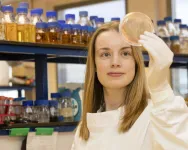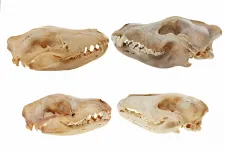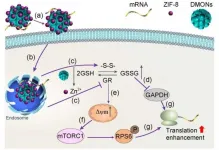INFORMATION:
Study coauthors are Curtis Warren, MPH, CPH; Anne-Marie Carpenter, MD; Daniel Neal, MS; Kenneth Andreoni, MD, FACS; and George Sarosi, MD, FACS, all with the department of surgery at the University of Florida.
"FACS" designates that a surgeon is a Fellow of the American College of Surgeons.
The study authors have no relevant financial relationships to disclose.
Citation: Racial Disparities in Liver Transplantation Listing. Journal of the American College of Surgeons. DOI: https://doi.org/10.1016/j.jamcollsurg.2020.12.021.
About the American College of Surgeons
The American College of Surgeons is a scientific and educational organization of surgeons that was founded in 1913 to raise the standards of surgical practice and improve the quality of care for all surgical patients. The College is dedicated to the ethical and competent practice of surgery. Its achievements have significantly influenced the course of scientific surgery in America and have established it as an important advocate for all surgical patients. The College has more than 82,000 members and is the largest organization of surgeons in the world. For more information, visit http://www.facs.org.
Non-Hispanic Black patients are disproportionately left off liver transplant waitlists
Insurance access, travel distance, and lack of awareness of options contribute to transplant waitlist disparities, according to new Journal of the American College of Surgeons study findings
2021-01-11
(Press-News.org) CHICAGO (January 11, 2021): A new study of liver transplant centers confirms that non-Hispanic white patients get placed on liver transplant waitlists at disproportionately higher rates than non-Hispanic Black patients. However, researchers went a step further as they identified key reasons for that disparity: disproportionate access to private health insurance, travel distance to transplant centers, and a potential lack of knowledge among both practitioners and patients about available options. The study was selected for the 2020 Southern Surgical Association Program and published as an "article in press" on the website of the Journal of the American College of Surgeons in advance of print.
"We found that the Black population was underrepresented at the vast majority of centers, meaning that the percentage of the Black population in a donor service area (DSA)--the geographic area the center serves--was significantly higher than the percentage of the Black population on waitlists," said lead author Ali Zarrinpar, MD, PhD, FACS, a transplant and hepatobiliary surgeon at the University of Florida, Gainesville.
Dr. Zarrinpar and colleagues analyzed deceased donor liver transplant and waitlist data obtained from the Scientific Registry of Transplant Recipients for 109 high-volume liver transplant centers (250 or more transplant operations over a five-year period from 2013 to 2018), excluding Veterans Affairs centers and Hospital Auxilio Mutuo in San Juan, Puerto Rico, because of its nearly 100 percent Hispanic population. The researchers used five-year U.S. Census Bureau estimates from 2017 to calculate demographics of each center's DSA.
Of 30,353 patients on waitlists at the 109 centers, 69 percent were non-Hispanic white, 7.9 percent were non-Hispanic Black, 17 percent were Hispanic, and 6.1 percent were of other racial or ethnic categories. By comparison, the overall national racial/ethnic distribution from the 2017 Census update was 61.5 percent white, 12.3 percent Black, 17.6 percent Hispanic, and 8.6 percent other racial/ethnic groups.
The disparities shifted a bit when actual liver transplant operations were evaluated: 70.9 percent in whites, 9.4 percent in Blacks, 14 percent in Hispanics, and 5.7 percent in other racial/ethnic groups. Nonetheless, resolving disparities on transplant waitlists would go far toward a more equitable distribution of transplants, the researchers found.
"When we looked at the characteristics of each individual center that correlated with that difference, we found that the more each center transplanted people with private insurance, the less they were representative of the Black population in their donor service area," Dr. Zarrinpar said. "Further, the longer amount of time people traveled to that center for liver transplantation, the less the center was representative of the percentage of the Black population in their donor service area."
Other potential reasons the study evaluated but did not correlate with the disparity include DSA poverty rates, educational levels, the proportion of public and private insurance within the DSA, and whether the center was a public or private institution, Dr. Zarrinpar said.
The findings raise multiple questions about why Black patients are placed on liver transplant waitlists at a much lower rate. "Are underrepresented populations just not getting referred to the transplant centers?" Dr. Zarrinpar asked.
"Another issue is primary care access. Patients need to be made aware earlier on that transplantation is a potential solution for certain liver conditions. If aware, they next need to know what it takes to be placed on a waitlist. Also, we must address the false perception that patients may have that liver transplants aren't covered by insurance, specifically those covered by Medicaid."
In fact, Dr. Zarrinpar added, Medicaid covers liver transplant, and "the vast majority of transplant centers will take public insurance."
Although the study did not look at barriers to liver transplants for underserved populations, they could exist at any number of points along the care spectrum, Dr. Zarrinpar said, including transplant centers, referring centers, referring physicians, or even patients themselves. "The patients may not have insurance at the time they develop their liver disease, but it's possible for the transplant centers to obtain coverage for people who are not just underserved but don't have the means," he said. "Many publicly available insurances exist for these patients."
The authors conclude that increased awareness of these trends may promote equitable access to liver transplant waitlists. Strategies include targeting physicians who could potentially refer these patients, Dr. Zarrinpar said. "As long as a patient has medical need, the ability to undergo a transplant operation successfully, and a support system to ensure long-term success with the transplanted liver, being placed on a transplant waitlist is an option," he said. "We don't want people to rule themselves out before seeking help."
ELSE PRESS RELEASES FROM THIS DATE:
Core design strategy for fire-resistant batteries
2021-01-11
All-solid-state batteries are the next-generation batteries that can simultaneously improve the stability and capacity of existing lithium batteries. The use of non-flammable solid cathodes and electrolytes in such batteries considerably reduces the risk of exploding or catching fire under high temperatures or external impact and facilitates high energy density, which is twice that of lithium batteries. All-solid-state batteries are expected to become a game changer in the electric vehicle and energy storage device markets. Despite these advantages, the low ionic conductivity of solid electrolytes combined with their high interfacial resistance and rapid deterioration reduce battery performance and life, thus limiting their commercialization.
The ...
Acta Pharmaceutica Sinica B volume 10, issue 11 publishes
2021-01-11
Special Issue: Tumor Microenvironment and Drug Delivery
Guest Editors: Huile Gao, West China School of Pharmacy, Sichuan University, Chengdu, China; Zhiqing Pang, Fudan University, Shanghai, China and Wei He, China Pharmaceutical University, Nanjing, China
The Journal of the Institute of Materia Medica, the Chinese Academy of Medical Sciences and the Chinese Pharmaceutical Association, Acta Pharmaceutica Sinica B (APSB) is a monthly journal, in English, which publishes significant original research articles, rapid communications and high quality reviews of recent advances in all areas of pharmaceutical sciences -- including pharmacology, pharmaceutics, medicinal chemistry, natural products, ...
Acta Pharmaceutica Sinica B volume 10, issue 12 publishes
2021-01-11
The Journal of the Institute of Materia Medica, the Chinese Academy of Medical Sciences and the Chinese Pharmaceutical Association, Acta Pharmaceutica Sinica B (APSB) is a monthly journal, in English, which publishes significant original research articles, rapid communications and high quality reviews of recent advances in all areas of pharmaceutical sciences -- including pharmacology, pharmaceutics, medicinal chemistry, natural products, pharmacognosy, pharmaceutical analysis and pharmacokinetics.
Featured papers in this issue are:
Berberine diminishes cancer cell PD-L1 expression and facilitates antitumor immunity via inhibiting the deubiquitination activity of CSN5 by authors Yang Liu, Xiaojia Liu, Na Zhang, Mingxiao Yin, Jingwen Dong, Qingxuan ...
Breakthrough on diarrhea virus opens up for new vaccines
2021-01-11
"The findings provide an increased understanding of how the virus gets through the stomach and intestinal system. Continued research can provide answers to whether this property can also be used to create vaccines that ride 'free rides' and thus be given in edible form instead of as syringes," says Lars-Anders Carlson, researcher at Umeå University.
The virus that the researchers have studied is a so-called enteric adenovirus. It has recently been clarified that enteric adenoviruses are one of the most important factors behind diarrhea among infants, and they are estimated to kill more than 50,000 children under the age of five each year, ...
Discovery pinpoints new therapeutic target for atopic dermatitis
2021-01-11
Researchers from Trinity College Dublin have discovered a key mechanism underlying bacterial skin colonisation in atopic dermatitis, which affects millions around the globe.
Atopic dermatitis (AD, also called commonly eczema) is the most common chronic inflammatory skin disorder in children, affecting 15-20% of people in childhood. During disease flares, patients experience painful inflamed skin lesions accompanied by intense itch and recurrent skin infection.
The bacterium Staphylococcus aureus (S. aureus) thrives on skin affected by AD, increasing inflammation and worsening AD symptoms. Although a small number of therapies are available at present for patients with moderate ...
Research shapes safe dentistry during Covid-19
2021-01-11
Leading research at Newcastle University has been used to shape how dentistry can be carried out safely during the Covid-19 pandemic by mitigating the risks of dental aerosols.
It is well known that coronavirus can spread in airborne particles, moving around rooms to infect people, and this has been a major consideration when looking into patient and clinician safety.
Research, published in the Journal of Dentistry, has led the way in helping shape national clinical guidance for the profession to work effectively under extremely challenging circumstances.
The findings have been used by the Dental Schools' Council, Association of Dental Hospitals and the Scottish Dental Clinical Effectiveness ...
Tasmanian tiger pups found to be extraordinarily similar to wolf pups
2021-01-11
Micro-CT scanning and digital reconstructions have been used to compare the skulls of the Tasmanian tiger (thylacine) and wolf across their early development and into adulthood, establishing that not only did the thylacine resemble the wolf as adults, but also as newborns and juveniles.
"Remarkably, the Tasmanian tiger pups were more similar to wolf pups than to other closely related marsupials," Professor Andrew Pask from the University of Melbourne said.
The collaborative study with Flinders University and Museums Victoria complement earlier findings that thylacine and wolf have evolved ...
Accelerating AI computing to the speed of light
2021-01-11
Artificial intelligence and machine learning are already an integral part of our everyday lives online. For example, search engines such as Google use intelligent ranking algorithms and video streaming services such as Netflix use machine learning to personalize movie recommendations.
As the demands for AI online continue to grow, so does the need to speed up AI performance and find ways to reduce its energy consumption.
Now a University of Washington-led team has come up with a system that could help: an optical computing core prototype that uses phase-change material. This system is fast, energy efficient and capable of accelerating ...
A charge-density-wave topological semimetal
2021-01-11
Topological materials are characterised by unique electronic and physical properties that are determined by the underlying topology of their electronic systems. Scientists from the Max Planck Institutes for Microstructure Physics (Halle) and for Chemical Physics of Solids (Dresden) have now discovered that (TaSe4)2I is the first material in which a charge density wave induces a phase transition between the semimetal to insulator state.
An international team of scientists at the Max Planck Institute for Microstructure Physics, Halle (Saale), the Max Planck Institute for Chemical Physics of Solids ...
Confined growth of ZIF-8 in organosilica nanoparticles to regulate mRNA translation
2021-01-11
Delivery of genetic molecules such as mRNA into cells is vital with important applications such as vaccine development. Various agents have been developed for mRNA delivery. However, conventional mRNA nanocarriers mainly focus on their physical interaction with mRNA molecules, or protection / delivery of mRNA, such as adjusting physical properties of nanocarriers to control binding with mRNA or cellular uptake. Moreover, effective mRNA delivery in hard-to-transfect APCs remains a challenge. The hard-to-transfect nature in APCs is partly attributed to the suppressed mRNA translation associated with the intrinsic high intracellular glutathione (GSH) level. Thus, ...
LAST 30 PRESS RELEASES:
Scientists boost cell "powerhouses" to burn more calories
Automatic label checking: The missing step in making reliable medical AI
Low daily alcohol intake linked to 50% heightened mouth cancer risk in India
American Meteorological Society announces Rick Spinrad as 2026 President-Elect
Biomass-based carbon capture spotlighted in newly released global climate webinar recording
Illuminating invisible nano pollutants: advanced bioimaging tracks the full journey of emerging nanoscale contaminants in living systems
How does age affect recovery from spinal cord injury?
Novel AI tool offers prognosis for patients with head and neck cancer
Fathers’ microplastic exposure tied to their children’s metabolic problems
Research validates laboratory model for studying high-grade serous ovarian cancer
SIR 2026 delivers transformative breakthroughs in minimally invasive medicine to improve patient care
Stem Cell Reports most downloaded papers of 2025 highlight the breadth and impact of stem cell research
Oxford-led study estimates NHS spends around 3% of its primary and secondary care budget on the health impacts of heat and cold in England
A researcher’s long quest leads to a smart composite breakthrough
Urban wild bees act as “microbial sensors” of city health.
New study finds where you live affects recovery after a hip fracture
Forecasting the impact of fully automated vehicle adoption on US road traffic injuries
Alcohol-related hospitalizations from 2016 to 2022
Semaglutide and hospitalizations in patients with obesity and established cardiovascular disease
Researchers ‘listen in’ to embryo-mother interactions during implantation using a culture system replicating the womb lining
How changing your diet could help save the world
How to make AI truly scalable and reliable for real-time traffic assignment?
Beyond fragmented markets: A new framework for efficient and stable ride-pooling
Can shape priors make road perception more reliable for autonomous driving?
AI tracks nearly 100 years of aging research, revealing key trends and gaps
Innovative techniques enable Italy’s first imaging of individual trapped atoms
KIER successfully develops Korea-made “calibration thermoelectric module” for measuring thermoelectric device performance
Diversifying US Midwest farming for stability and resilience
Emphasizing immigrants’ deservingness shifts attitudes
Japanese eels, climate change, and river temperature
[Press-News.org] Non-Hispanic Black patients are disproportionately left off liver transplant waitlistsInsurance access, travel distance, and lack of awareness of options contribute to transplant waitlist disparities, according to new Journal of the American College of Surgeons study findings
